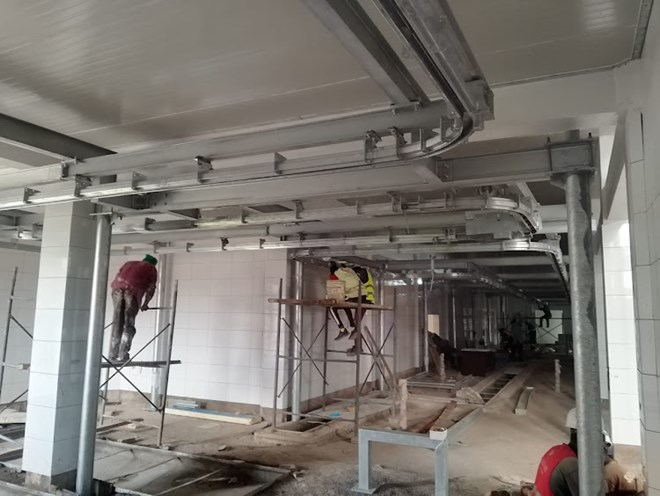
by MAUREEN KINYANJUI
Wednesday December 20, 2023

Ongoing works at the Isiolo Abattoir on December 19, 2023
Image: ICG
Livestock owners in Isiolo and neighboring counties will by March be able to access lucrative markets for their animals.
This follows the soon to be operationalised Isiolo Export Abattoir.
advertisements
The facility, whose construction commenced 16 years ago, is currently in its final stages of completion.The facility is also expected to provide employment opportunities for Isiolo residents.
Additionally, the abattoir will catalyse the growth of ancillary industries that process leather and other animal products.
James Munyoki, the project engineer, yesterday said the facility will feature two distinct rail lines.
He said one, specifically designed for sheep and goats will be fully automated, while the static one will cater for cattle and camels.
Munyoki said the abattoir underwent a redesign that saw incorporation of galvanised steel metal for both primary and secondary structures that support the rails.
Notably, the rails that come into direct contact with the meat are made of stainless steel to ensure that hygiene and quality standards are upheld.
Isiolo Governor Abdi Guyo had announced that his government has set aside 125 acres of land to fatten livestock to ensure availability of enough stock.
Stanley Kirimi, a representative from the Ministry of Agriculture praised the progress of the abattoir.
Kirimi is also the coordinator of the Kenya Climate Smart Agriculture project, which helped fund the project.
Situated on a vast landmass exceeding 500,000 acres, inclusive of feedlots, a disease-free zone, and a livestock receiving yard, the Isiolo Export Abattoir boasts of the capability to slaughter more than 1,800 livestock in one day.
The project contractor Isack Hajj said the project's progress aligns with the established timeline.
He said Isiolo county contributed Sh 400 million to the project while World Bank, through KCSAP, gaveSh450 million.
The abattoir is expected to serve Isiolo and the neighboring counties of Samburu, Laikipia, Meru, Garissa, Wajir, Marsabit.
Southern Ethiopia and Somalia are also in the abattoir's catchment area.
Once completed, the abattoir will employ 80 people directly and benefit more than 20,000 livelihoods.